Compression socks can really come in handy.
Hiking, running, or just living life. Standing or sitting all day can be equally bad for your leg health.
These magical socks are specially designed to alleviate swelling, whether from standing on your feet all day or being off your feet for too long. They’re used by athletes, frontline workers, those recovering from surgery and many more.
Compression socks also come in a variety of sizes to best meet your needs most comfortably. And that includes the super plus compression stockings.
Essentially, super plus size compression stockings are bigger pantyhose. They serve the same purpose as other compression socks but are specifically designed for bigger legs.
These sophisticated compression stockings provide steady pressure in the lower extremities. By providing pressure, they push blood back toward the heart from the legs. More pressure is usually placed at the ankles and feet, which provides the extra squeeze needed to promote healthy blood flow.
If you’ve tried the plus size compression socks and struggled to get them to fit, you’re in luck. Here we share all about the super plus size compression pantyhose.
Related: How to Size Compression Socks?
The Super Plus Size Compression Stockings
You’ve probably heard of all the great things that compression socks can do for your blood flow and overall health. With an intentional focus to meet the needs of those with larger legs, the Super Plus Size Compression stockings are unlike any compression socks you have seen before.
As these are specially made to meet the compression needs of people with very large legs, these stockings may not be the most popular items off the shelf.
However, they are also used in supporting both the venous and the lymphatic systems of bigger legs. These socks offer graduated compression, with maximum compression around the ankles and decreasing as you go up the leg.
Like your regular compression socks, they are snug-fitting and stretchy to squeeze your leg without being too uncomfortable.
Regardless of size or type, compression socks are designed to support your health, mobility and blood flow in your body. They are designed to help you to:
- Improve blood flow.
- Prevent fluid from pooling in the lower legs. (Are compression socks good for sitting all day? Yes!)
- Prevent issues arising from skin ulcers and other related problems.
- Provide relief from symptoms of varicose veins, deep vein thrombosis, and skin ulcers.
- Maintain healthy legs if you are usually on your feet.
Uses of Super Plus Size Compression Socks
Bariatric Compression Socks are designed to help control the upwards flow of blood from the lower extremities (legs) towards the heart. This micro-massage helps to prevent stagnation of body fluids and varicose veins. It also improves muscle oxygenation.
The major function of these socks is to stimulate and enhance the circulation of blood from the legs up to the heart. As a result, problems such as varicose veins, inflammation of the veins and other concerns related to venous insufficiency can be avoided.
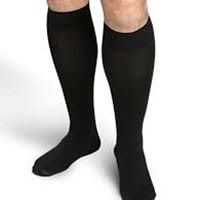
Compression has to be graduated if blood flow must improve. This compression, which is applied on the walls of the blood vessels by the socks, has to decrease as it moves from the lower part of the leg to the higher part. That is, the compression at the foot and ankle needs to be higher for the blood to rise easily.

Types of Extra Wide Compression Stockings
As you choose the right compression socks, you’ll need the right size and amount of pressure for your specific compression needs.
Typically, compression stockings come as knee high or thigh high stockings. The knee-high stockings help to promote circulation in the lower extremities and whenever you are exercising. Many people find they make a great replacement for crew socks.
Thigh-high compression stockings are often recommended by doctors for treating venous issues like varicose veins. They are also used to prevent formation of blood clots after surgery.
You can tell the intended use of a particular compression stocking by the shape and degree of compression, the aesthetic appearance and the fabric. It matters that the product looks good too, like this splatter screen on Amazon.
To ensure you get the best possible pair for your needs, there three main kinds of compression stockings. Each of these types are also available in a super plus size.
Support Stockings or Preventive Elastic Stockings
If all you need is little pressure from extra large compression socks, try support socks. They come often as support pantyhose. The support pantyhose is the least tight option.
Compression Stockings
Available in different pressure ranges, super big compression stockings can be purchased from pharmacies, drugstores, and online stores. They usually provide more compression support than pantyhose.
Prescription or Graduated Compression Stockings
These types are for people with conditions that require a great amount of pressure. Usually, a specialist has to fit these stockings to make sure they work effectively. They are snug, but not too tight to the extent that they will interfere with your circulation. Graduated compression stockings are great for both medical and therapeutic uses.
Why You Should Avoid Wearing Tight Compression Stockings
Extra Large Compression Socks play a vital role in managing venous diseases, venous ulcers and averting thromboembolic diseases in the legs’ deep venous system.
Although they can look very easy to apply, they have the potential to cause a lot of damage if they are worn inappropriately. Cases of the pressure being unevenly distributed or in excess could cause the skin to break, especially in patients who are older or have brittle, thin skin.
Be sure you carefully put on, assess and monitor your use of compression stockings. When using compression stockings, you need to understand that one size does not fit all.
If you use your compression socks incorrectly, you raise your likelihood for developing more problems. Incorrect use of compression pantyhose, whether in patient care facilities or hospitals, could also result from wearing the wrong stocking size.
The side effects of wearing tight compression stockings is usually from of incorrect use. Wearing compression stockings incorrectly has the potential to cause discomfort.
Early Signs
One of the first signs that you need super big compression socks is that you will find out that your compression stockings are too hard to put on or are too tasking to take off.
These side effects of wearing tight compression stockings are usually minor and can be solved as soon as you get a new pair that fits your legs perfectly.
This depends on whether they are wrong for the condition you are treating or the length is wrong. When this happens, you need to consider upgrading your stockings to super large compression socks.
Reasons to Avoid Wearing Very Tight Compression Stockings
Here are some reasons you should not wear very tight compression stockings:
Discomfort
If you wear your compression stockings incorrectly, one of the first side effects that you will notice is discomfort. While wearing the stockings, some people tend to suffer from pain, discomfort and other unpleasant sensations.
Others only feel pain after removing the compression stockings. If you fall under any of these categories, try not to wear the compression stockings for too long. Wear them only during the day and take them off before going to bed.
Typically, there is no point wearing compression stockings to sleep because, when sleeping, gravity will have the same effect as compression stockings on your legs.
Tingling and numbness of the feet
When you have a numbness, tingling or pricking of your skin, you may have Paresthesia. Some people refer to it as a feeling of the limbs being ‘asleep’ or a feeling of ‘pins and needles’. You are more likely to experience Paresthesia if your compression stockings are too tight.
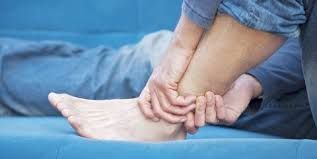
Calluses and corns
One of the ways your skin protects itself from pressure and friction is by becoming hard. Hardening of layers of the skin can develop on the toes, feet and other parts of the legs when you wear compression stockings that are too tight.
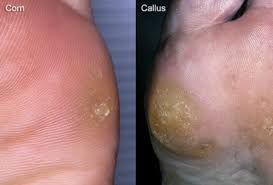
Loss of circulation
Compression stockings are designed to help people suffering from circulation problems.
However, wearing tight or incorrect compression socks could end up amplifying a problem the stockings are supposed to help with. If you wear the right size of compression pantyhose, and wear them correctly, they will help you with your circulation.
However, if they simply do not fit, one of the first things you will notice will be loss of circulation. If you are already using plus size compression stockings and notice you are experiencing circulation issues, you might want to upgrade to extra large compression socks.
Skin itching and irritation
One of the common side effects of wearing compression stockings is itching. This often occurs around the compressed area. When you notice itching, first run an allergy test to be sure your skin is not reacting to the fiber materials in the socks.
If the allergy test turns out to be negative, your compression stockings are probably too tight. Consider getting super large compression pantyhose instead.
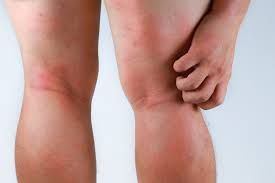
Spasms in toes
When wearing your compression stockings, you may experience a sudden, involuntary and violent contraction of muscles in your toes. This contraction is often accompanied by sudden interference in function and sudden pain, which could produce a distortion and sudden, involuntary movement.
When you experience these side effects, know that your compression stockings are doing your body more harm than good. You should stop using them and use extra big compression pantyhose instead.

Swelling in the toes
Compression socks for swelling and especially swollen feet are a great idea.
You could have swelling in your toes if you wear compression stockings that are too tight. If your compression stockings are doing their work well, you should not be having any swelling in your toes.
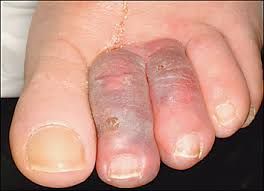
Joint pain in the knees
Joint pain in the knees is one of the many problems wearing compression stockings can help you deal with. However, if you are wearing the wrong size, you will be exposing yourself to more joint pain in your knees. When you start feeling this pain, consult your doctor immediately.
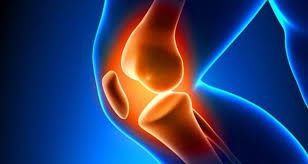
Bad smell
It is important to have more than one pair of compression stockings. Some people even have more than two pairs.
There are conditions that require you wear only one stocking. When you are wearing one stocking or one pair of stockings, you should be wearing the other one and drying the other up. It is important to wash and dry your compression stockings properly so as to prevent unpleasant smells.
Putting on Compression Stockings
You can make extremely large compression pantyhose part of your daily routine. To be sure they fit well, the stockings will be snug but offer adequate comfort. For quicker result, you should consider wearing them all the time. The only time you may take them off is when you are bathing or sleeping.
Before Putting on the Extra Wide Compression Stockings
Although putting on these stockings can be quite tricky, there are things you can do to help ease the process. Here are some helpful tips as you prepare to put on your compression socks:
- When you have purchased your super big compression socks, wash them. This will stretch them a little and make them easier for you to put on.
- If you have an open wound on your legs, dress it neatly and cover it before you put on the compression stockings.
- Keep the compression stockings by your bed so that you can wear them as soon as you get up.
Putting on the Extra Wide Compression Stockings
If this is your first time of wearing these compression stockings, you may encounter some complications. Follow the following procedure to put on your compression stockings:
- First, determine the correct size of your leg’s circumference by taking a measurement of your leg.
- Turn the compression stockings inside out until you get to the heel part.
- To ease the process for open-toe compression stockings, you can put on your silk stockings first. Use both of your hands to stretch the stocking’s foot then put in your foot until you get to the heel.
- After wearing the silk stocking, put on the stocking you had rolled previously. Adjust the mesh position using the palm of your hand. Check to make sure the compression is stretched in a uniform manner.
- Pay close attention to the heel to ensure it is in the right position.
- Unroll your stockings completely and adjust it until it is in the right position. Use the palm of your hand to position the mesh without pulling the top of the stocking directly.
- After doing this, take off the silk stocking by pulling it from the toe part.
- Check your stockings to make sure there are no creases or wrinkles that may cause irritation or hinder blood flow.
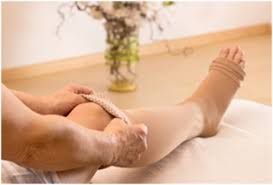
Problem Solving with Compression Socks
It is possible to encounter some problems when putting on your extra extra large compression socks. Here are a few tips to help you:
- If necessary, put on rubber gloves. These will allow you properly grip the fabric and make it easier to pull up.
- Apply talcum powder or silicone lotion (like ALPS) on your legs before applying the stockings and make them easier to slide on. For stockings that contain latex or those you are not sure contain latex, you should not use just any cream or lotion on the legs when wearing the stockings. When you are not wearing the stockings, you may apply any other cream or lotion you like.
- Try using a silk slip sock if you are using toeless stockings. This silk slip sock helps the stocking slide easily over the foot. You can pull it off through the toe after putting on the stockings. Visit any medical supply store to get one.
- Another option for easing the application of your compression stockings is by using a stocking butler. This is a metal device that helps to keep the stocking open as you step into it.
- If, at any point, your toes start feeling numb, sore, inflamed or turn dark while wearing the compression stockings, take them off and consult your doctor.
Why are My Legs Getting Bigger?
You may have already known that your legs are larger than most. But what about when they are concerningly large? Compression socks can help alleviate several of these health concerns and reasons for enlarged legs. Here are some reasons why your legs may require super plus size compression socks.
Be sure to choose the best compression socks for swelling after reading the possible causes below…
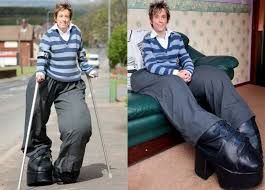
Lipedema
One of the major reasons your legs are becoming so large that you need to use super plus size compression stockings could be lipedema.
Lipedema is a disorder that involves the enlargement of the legs caused by fat deposits under the skin. The characteristic appearance of lipedema is abnormally enlarged legs all the way from the hips to the ankles, with the feet appearing as normal-sized.
Contrary to some opinions, lipedema does not result from obesity. Instead, it is assumed to be caused by hormones and affects more women than men. It’s important to identify this condition early on.
If it allowed to progress, it can develop into a much more severe medical problem that may not be able to be addressed in late stages.
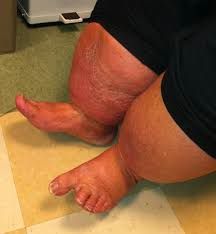
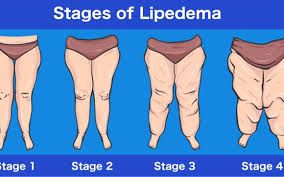
Symptoms
While enlarged legs and normal-sized feet is the most obvious and clear symptom of lipedema (or lymphedema), there may be some other symptoms and indicators of your enlarged legs.
- Sensitive to touch
- Easy bruising
- Symmetrical swelling
- Pain and aching – usually spontaneous but can be caused by pressure
- Obesity of the arms and/or legs that is often disproportional
- Blood vessels may be broken underneath the skin
- Spider veins become visible outside of the thigh
- Dieting does not improve the parts affected by lipedema but improves other areas
- Familial history
Causes
Experts suspect that lipedema has hormonal causes and affects mostly women. The condition is said to worsen at puberty, in pregnancy, after gynecologic surgery, or during menopause.
Also, people who have a familial history of the condition may be more susceptible to it because lipedema may also be genetic. Many people suffering from lipedema are overweight or obese, but the condition also affects people with normal weight.
Diagnosis
One way to be sure you have lipedema is to run a Stemmer’s test. If you are able to pinch a fold of skin at the toe base or a finger, then the Stemmer’s test is negative. When the Stemmer’s test is positive, you will not be able to pinch the skin fold.

Treatment
Treatment of lipedema involves procedures that help to minimize the swelling, prevent escalation of the disease and control the pain associated with it.
One of the best ways to treat lipedema is using compression therapy in addition to other arsenal of tools for treatment. Wearing super plus-sized compression stockings will help to effectively contain the symptoms of lipedema.
Compression socks are often prescribed after the patient has gone through decongestive therapy to reduce the swelling. Compression socks will be used to encourage lymphatic fluids to flow out of the affected limb.
During the early stages, lipedema can be managed with exercise and a healthy diet.
Patients have to wear big-size compression socks during any kind of exercise. Exercise should be done for about 45 minutes about three times every week. This will prevent the swelling by improving circulation, which helps to press water into the tissues.
Nurses have known the benefits of compression socks for years. But their patients should also wear extra wide compression socks. Therefore, it is of utmost importance that patients are correctly fitted for the best size of compression sock. Compression socks that do not fit accurately can increase discomfort and pain.
FAQ
We recommend 20-30 mmHg compression level. Lower compression like 15 mmHg usually isn’t enough.
What to avoid? Skip the “one size fits all” and “copper” scams. Ignore FDA labels. This is just marketing. And don’t buy used ones on eBay.
Good quality compression socks come in sizes: Small, Medium, Large, XL, 2XL, 3XL, 4XL, 5XL, 6XL, and 7XL. These sizes are unisex and perfect for both men and women.
Most compression socks are made in developing nations like China or India, not the United States. It’s not necessary for them to be marked “Made in the USA” to have high quality.
As for fit and finish, cotton is not a common material. Usually compression socks are made of stretchy technical fabrics like nylon and polyester. (Same material as the original leotard outfits, which is why they’ve been given the title “pantyhose for men”)
Some people prefer compression sleeves (similar to arm sleeves with open ends on both sides) or open toe compression sleeves. While the accessibility of these is good, you will receive limited coverage. We prefer brands that cover your calves, ankles, feet, and toes. That way you get compression throughout the leg, and not just the calves. That’s why we prefer knee high, wide calf compression socks. Thigh highs are usually too much coverage, so we prefer versions that stop at knee high lengths.
Color? Most people choose black. But there are other colors. Some companies like mojo compression put out a ton of colors, but those don’t seem to be as popular.
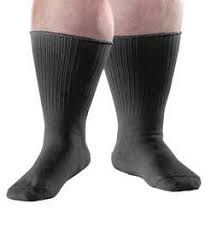
Deep Vein Thrombosis (DVT) and Thrombophlebitis
People who have DVT have a blood clot developing in a vein in their legs. If you have this condition and do not manage it early, the blood clot could break off and move up to your lung.
This could result in a life-threatening condition known as pulmonary embolism.

Thrombophlebitis, also known as superficial thrombophlebitis, causes clots to form closer to the skin surface, but they may not break off.
Symptoms
The first symptom you will notice is swelling of the calf or other part of the leg when the blood starts pooling in the area.
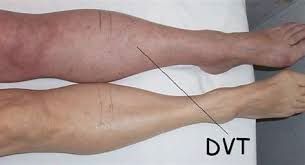
Other symptoms include things like:
- Leg pain, cramping or tenderness
- Warm skin
- Skin will be tinged blue or red
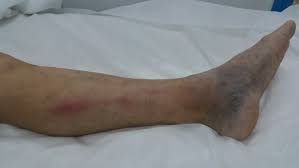
Treatment
You can substantially cut your risk of having debilitating complications from DVT by using super large compression socks in the first 24 hours of DVT therapy.
During this acute phase of treatment, compression stockings are used as a preventive measure against complications. By lessening the diameter of the veins, these compression garments boost blood flow and clear the clot material. Again, it’s critical to use compression socks during this time. Mens compression socks are generally the same as womens compression socks.
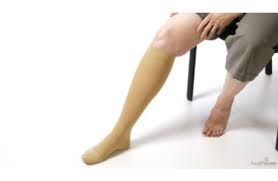
Varicose Veins in the Legs
Varicose veins, also known as varices, are veins which are abnormally dilated. Due to congestion of blood which will struggle to flow toward the heart from the legs, the tissues in the lower limbs will become seriously damaged.
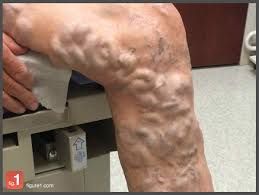
In the circulatory system, the veins are tasked with bringing blood from the tissues to the heart. They form the main storage center of blood. With the low venous system pressure, the thin walls of the vessels are equipped with a muscle layer that allows them to contract or expand according to what the body needs at the time.
The blood pressure in the veins reduces gradually from the feet up toward the heart.
Symptoms
As a symptom of a vein disease, varicose veins do not necessarily show symptoms with severity that is directly proportional to the intensity of the alternation of the veins. Symptoms that may develop along with varicose veins include:
- Itching
- Pain
- A sensation of congestion, heaviness and pain in areas affected by varicose veins when you stand up for a while
- Night cramps
- Dark patches on the skin as a result of red blood cells that leak out of the dilated veins; these are not usually present in the tissues
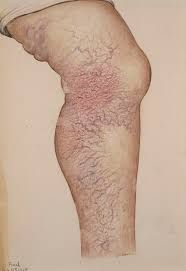
Where to Buy
Compression socks can now be purchased online.
ComproGear Compression Socks are sold on Amazon.
Plus the shipping and handling is fast (they fly packages instead of using slower ground shipping). Best of all, you can change the orders if changes occur (cancellations, returns, refunds, etc…).
Causes
Varicose veins can be hereditary or caused by bad habits and some other health conditions. Some of the causes of varicose veins are:
- pregnancy
- sedentary lifestyle that often results in the inactivity of the leg muscles
- clothing that is too tight
- obesity or being overweight
- exposure to heat
- very high-heeled or very low-heeled shoes

Treatment
Wearing extra wide compression socks can help to reduce symptoms of varicose veins, such as blood flow and foot swelling.
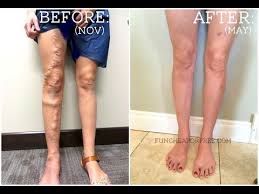
Kidney Problems
Just like your other organs, your kidneys are connected to parts of your body to perform multiple jobs. The main function of the kidney is to filter out waste from your blood and remove the extra fluid which becomes urine. The kidneys control blood pressure, help to make red blood cells, regulate electrolytes and activate vitamin D.
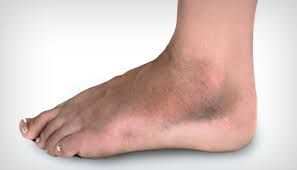
If your kidneys do not work like they should, you may have a long-term kidney disease. The kidneys can gather waste material and water from your blood instead of filtering it out. This can cause your legs and arms to swell, whether mild or severe.
Acute kidney failure happens when the kidneys stop working suddenly. This can also result in swollen feet, ankles and legs. However, this happens when you are hospitalized as a result of other problems.
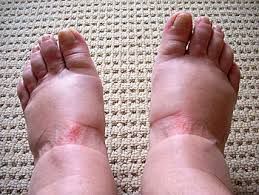
Symptoms
If you have kidney problems, you may notice symptoms like:
- Nausea
- Fatigue
- Intense thirst
- Shortness of breath
- Bruising and bleeding
Causes
Issues with your functioning kidneys can be due to a variety of causes.
- If your blood is not flowing to your kidneys, this could be as a result of:
- Liver failure
- Infection
- Medications like aspirin, naproxen, ibuprofen or COX-2 inhibitors
- Heart failure
- Blood or fluid loss
- Dehydration or severe burns
- Something may not be allowing urine to flow out of your kidneys. This means that you may be experiencing things like:
- Cervical, colon, bladder, or prostate cancer
- Kidney stones
- Enlarged prostate
- Blood clots in the urinary tract
- Nerve damage in the bladder
- Your kidney may have been damaged by something such as:
- Deposits of cholesterol
- Blood clots
- Inflamed kidney filters or glomerulonephritis
- Medications like NSAIDS that can cause direct damage to the kidneys
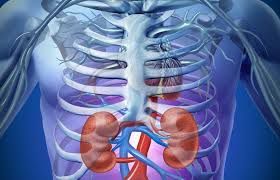
Treatment
When you have kidney failure, the skin tends to be frail and gets torn easily. You need to use compression stockings that are adjustable and easy to put on, such as super-sized compression socks. Compression therapy is more effective when you use it in conjunction with dialysis days.
Compression can help to improve the quality of life of people with kidney problems by protecting the skin from tears and reduce the weight of water in the legs.
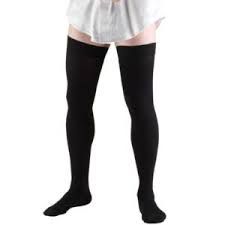
Final Thoughts
Whether or not you already have health problems or severe medical conditions, you can benefit from wearing super plus size compression stockings.
People wear them for comfort and to prevent severe medical conditions. In addition to from improving blood flow, they help minimize pain and swelling in the legs.
By using these stockings, you are lessening your chances of having deep vein thrombosis, blood clots and other problems associated with circulation.
